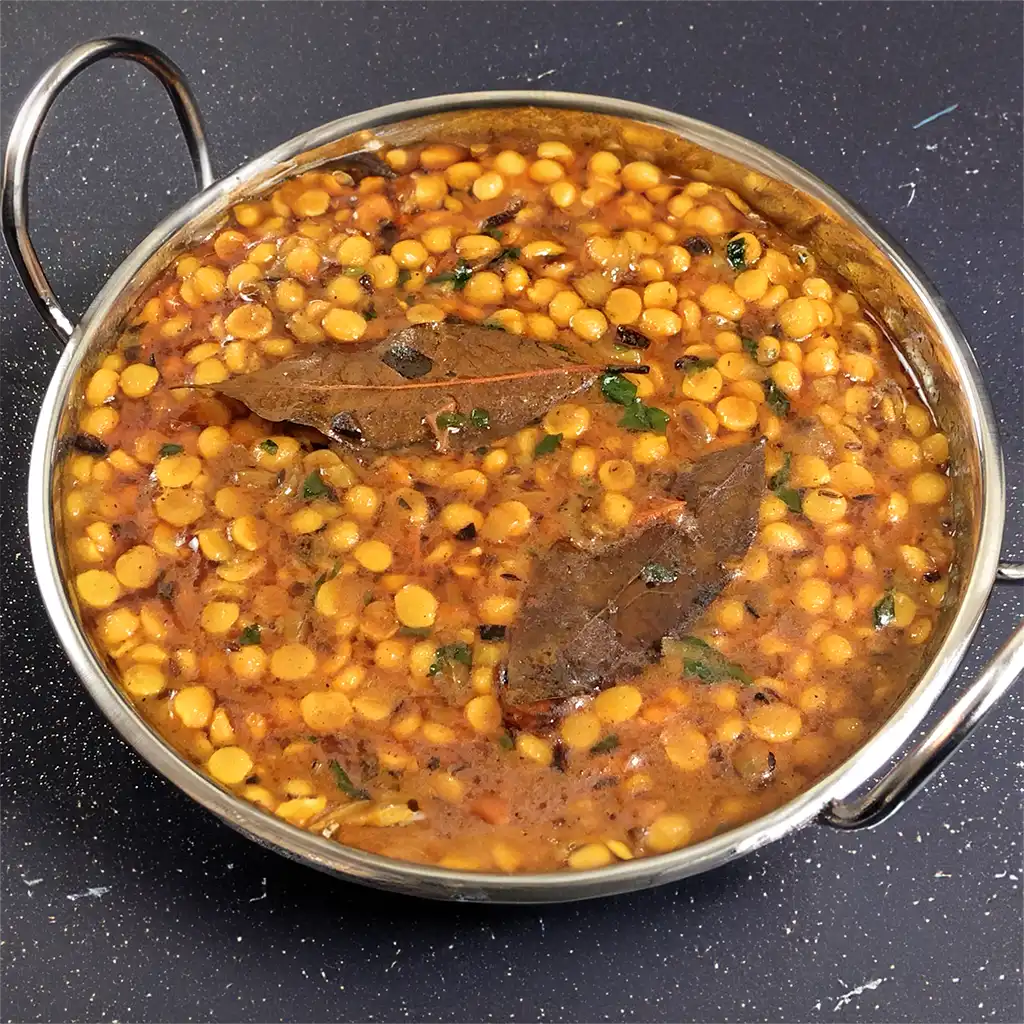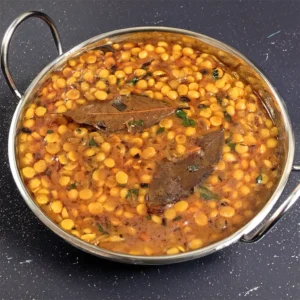
Ever wondered how to make that delicious, aromatic Tadka Dal you get at your favorite Indian restaurant? Well, you’re in luck!
Tadka Dal, a traditional Indian dish, is not only bursting with flavors but also surprisingly easy to make at home. Originating from the heart of Indian cuisine, this recipe combines split Bengal gram lentils with a rich blend of spices, creating a wholesome and comforting meal that’s perfect for any occasion.
While the name might sound fancy, don’t be intimidated. Tadka Dal is actually quite beginner-friendly.
It involves cooking lentils until soft, infusing them with a tantalizing mix of spices, and finishing off with a flavorful tempering of garlic and cumin seeds in ghee (clarified butter).
The result? A hearty, soul-warming dish that pairs perfectly with steamed rice or freshly made naan bread.
Expert Tip: Don’t skip the final tadka step! The tempering of garlic, chilli, and cumin seeds in ghee adds a burst of flavor and aroma to the dal, elevating it to another level of deliciousness.
Lentils (Split Bengal Gram): Lentils provide a rich source of protein and fiber. They cook up creamy and soft, creating the hearty base of the Tadka Dal.
Oil: Oil serves as the cooking medium for sautéing the spices and aromatics, infusing the dal with rich flavors.
Cumin Seeds (Jeera): Cumin seeds add a warm, earthy flavor and aroma to the dish, enhancing its overall taste profile.
Crushed Chillies: Crushed chillies bring a subtle heat to the dal, adding depth and complexity to the flavor.
Bay Leaf: Bay leaves impart a subtle, floral fragrance to the dish, elevating its aroma and taste.
Onions: Onions provide a savory sweetness and depth of flavor to the dal as they caramelize during cooking.
Tomatoes: Tomatoes add a tangy brightness and richness to the dal, complementing the earthy lentils and spices.
Turmeric Powder: Turmeric powder not only lends a vibrant yellow color to the dal but also offers subtle earthy notes and health benefits.
Chilli Powder: Chilli powder adds a kick of heat and intensity to the dish, balancing the flavors of the other spices.
Salt: Salt enhances the natural flavors of the ingredients, bringing all the elements of the dish together in harmony.
Garam Masala: Garam masala is a fragrant spice blend that adds warmth and complexity to the dal, infusing it with layers of flavor.
Coriander: Fresh coriander leaves (cilantro) are used as a garnish, adding a pop of color and a fresh, herbaceous aroma to the finished dish.
Expert Tip: To enhance the flavor of the lentils, you can soak them in water for 30 minutes before cooking. This can help reduce cooking time and improve digestibility.
Expert Tip: Experiment with different varieties of lentils, such as red lentils or yellow lentils, to create variations of Tadka Dal with unique textures and flavors.
Leftover Tadka Dal can be stored in an airtight container in the refrigerator for up to 3-4 days. Simply reheat it on the stovetop or in the microwave until heated through before serving.
Yes, Tadka Dal freezes well. Allow it to cool completely, then transfer it to freezer-safe containers or resealable bags. It can be frozen for up to 2-3 months. Thaw overnight in the refrigerator before reheating.
Absolutely! Feel free to adjust the amount of chilli powder and crushed chillies according to your personal preference for spice. You can also add a chopped green chilli for extra heat or omit the chillies altogether for a milder version.
Yes, you can substitute butter for ghee in the tadka if you prefer. However, ghee adds a unique nutty flavor and richness to the dish, so using ghee will give you the most authentic taste.
Here are some more recipes for you to enjoy! If you my recipes don’t forget to rate and leave a comment.
If you have any recipe suggestions, please do not hesitate to ask me. A great way to stay in contact with me is through Instagram, Facebook, Twitter and YouTube. Don’t forget to tag me @CookwithNabeela in your recipe photos!

Subscribe now to receive my latest recipes directly in your inbox. Stay up-to-date and never miss out!

I love to cook! I want to share with you my favourite, delicious family-friendly recipes. I want to inspire you to create fantastic food for your family every day.
Add your first comment to this post